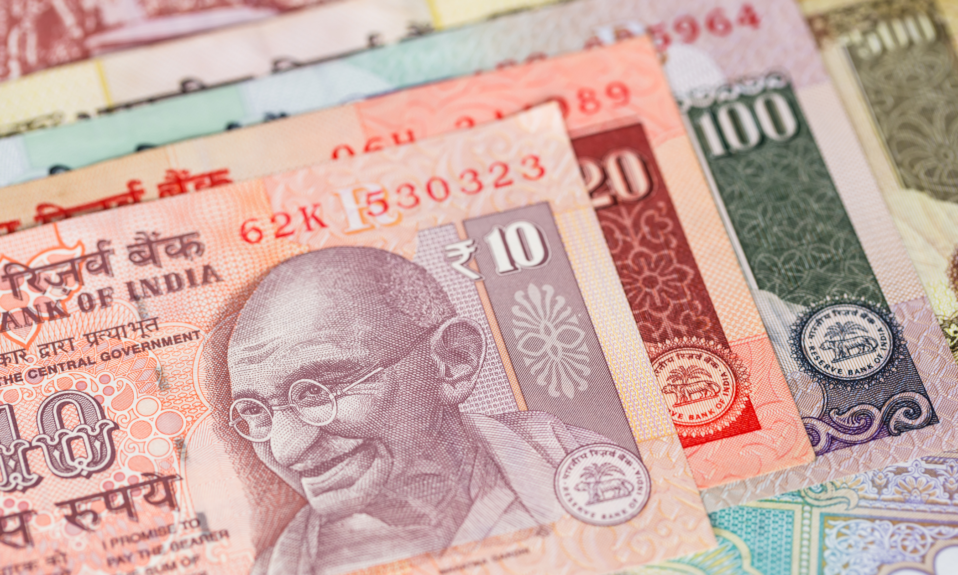
When it comes to credit card usage in India, statistics show that the numbers have skyrocketed over the last few years. In 2018, the Indian credit card market volume had reached a total of 37.48 million and in 2019 it had risen to 47 million.
That’s a 10 million growth in just one year and in 2020 the estimations for the total credit card volume reached a number of 57.5 million.
While the credit card market share is still smaller in numbers than its debit card counterpart, all signs point that the two categories will shorten the gap between them in the next decade.
By the way, did you know that credit cards have been since the 1920s? They were used by stores to entice loyal customers to spend more easily.
Now it’s time to dive right into the facts and figures.
Industry Growth
If there’s one thing we can be certain about in life, that thing would be that the sun will always rise from the east. That and the fact that the credit card industry will continue to grow.
What are the trends? What are the numbers? Let’s check them out below to get a better image of the industry’s global growth.
$1.82 trillion in-store payments by credit card is the number expected by 2024.
According to Business Insider, credit card processing companies will continue to lead the payment ecosystem worldwide.
In 2019, 23.6% of US consumer transactions were done with credit cards.
The US is notoriously known for its high usage of credit cards and all the relevant credit card spending statistics prove it.
16.6 million mPOS terminals are expected by 2024, in the US alone.
If this number doesn’t impress you, that’s almost the total population of a country like The Netherlands or Senegal.
The top 10 card issuers held 81.4% of credit card balances.
This number stands for 2019 alone, as for 2020 and 2021 the numbers are heavily influenced by the CODIV-19 pandemic, which triggered even more people to use credit and debit cards.
23.9% is the compound annual growth rate (CAGR) in the US.
To put things in other words, credit card usage is increasing by almost a quarter in the number of users each year.
The US compound annual growth rate will hit $262.6 billion by 2024.
The same analysis shows both the growth percentage and the total amount in trillions of US dollars.
Credit Card Usage and Spending Statistics
According to credit card statistics, 2019 and 2020, were record-breaking years in terms of usage and spending.
This is also largely due to the COVID-19 pandemic, which made a lot of people switch to online credit card payments, since brick and mortar stores were mostly closed.
Also, taking into consideration that contact with cash money is not recommended, credit card payment will gain an even bigger edge in the next 3 to 5 years.
63% of consumers have 2 or more credit cards.
The numbers clearly show a preference for credit card shopping, instead of a debit card or cash.
Cash represents 26% of consumer transactions in the US.
Why these studies may not be similar for the credit card market share In India for 2020, chances are that cash payments will start to decrease worldwide.
Approximately 67% of small businesses have a company credit card.
However, just around 24% have declared it as the primary method of business spending, according to Forbes.
80% cash transactions are for payments of less than $25.
This means that when it comes to big shopping purchases, large amounts of money are transferred by US shoppers via credit card and debit card payments.
Small-business credit card purchase volume will go from $493 billion in 2017 to $686 billion in 2022.
That’s a $193 billion growth in 5 years, equating to almost $40 billion per year.
SMEs make up 99% of businesses in the United Kingdom.
But only 13% of those use credit cards.
US shoppers are willing to spend up to 100% more with a credit card.
Reports show that people are willing to spend two times more when they use a credit card.
This is also due to the psychological aspect of using cash. When paying with cash money, you can actually see it going away, as opposed to some numbers in your bank account.
80% of consumers use a debit card for everyday purchases.
While credit cards remain the first choice when shopping for larger and more expensive items, based on the same quoted article.
India Credit Card Statistics: by Bankwise
If you were ever looking to find a magical pdf about the credit card industry in India, you can stop your search right here. There’s no such thing, although there are a lot of published reports that show all the relevant numbers.
Bankwise is one of the best sources to check up credit card usage in India, in 2020, for example, but you can also find a very good database with relevant information on this topic.
Let’s go through these numbers together:
- 20.473 INR mn is the total amount of credit card transactions reported by the American Express Banking Corporation
- Andhra Bank data was reported at 79.918 INR mn
- Axis Bank Limited data was reported at 375.147 INR mn
- Bank of America data was reported at 0.828 INR mn
- Bank of Baroda data was reported at 26.167 INR mn
- Bank of India data was reported at 159.026 INR mn
- Canara Bank data was reported at 196.305 INR mn
- Central Bank of India data was reported at 10.826 INR mn
- Citibank data was reported at 231.118 INR mn
- Corporation Bank data was reported at 11.062 INR mn
All these numbers reported by Bankwise show the top players in the Indian credit card industry as of August 2018.
We’ve named just the top 10 banks presented in this credit card industry analysis for India, and for 2021, most likely, these top players will consolidate their leading positions.
25% is the compound annual growth rate (CAGR) during 2020-2025.
The Indian credit card sector is forecasted to rise by almost a quarter of its current worth in the next four years.
52 million Indian credit card users were reported in 2019.
That’s almost equivalent to the entire population of South Korea or Kenya. It’s just another way of looking at the credit card statistics in India.
3 credit cards for every 100 people in India.
This number fades in comparison to the US, where 32 out of every 100 people can own a credit card.
Analyzing all the presented data above, we can easily deduce that the credit card market in India for 2020 and 2021 will have even more room to grow.
829.4 million debit cards were reported as of April 2020.
We’re including the numbers for 2020 here because not all the data from the previous year has been made public by the banks operating in India.
4.18% was the highest percentage of credit card users in India.
Taking into consideration the numbers between 2011 to 2017. Only people with the ages of 15 or higher were taken into account.
Credit Card Debt Statistics
$976 billion in credit card debt is the number reached by Americans as of the end of 2020.
These numbers are the highest ever recorded, according to the Federal Reserve consumer credit report for the past year.
£72.1 billion ($99.85 billion) in the total credit card debt of Britons.
All the people from the United Kingdom have almost $1 trillion in credit card debt.
$6,194 is the average American’s credit card balance.
In this analysis, the average US citizen’s credit card balance is based on the numbers deriving from the second quarter of 2019.
$893 billion is the total credit card balance in the United States.
If you were to take each and every single US credit card and put them all together, that is the amount you’ll reach, according to the same study.
Interesting fact: American citizens own 511.4 million credit cards.
The entire population of The United States of America is 328.2 million people.
61% of US consumers have at least one credit card.
While the average American owns four credit cards.
19.71% is the average US business credit card interest rate.
When it comes to travel rewards cards, the rate goes up to 20.56%.
52% of US citizens have credit card balances of $2,500 or less.
Consumerism is at its peak in the US and the credit card industry knows it and the available stats simply reinforce this argument.
Credit Card Usage Geographic Deep Dive
Let’s take a deep dive into credit card usage from a geographic point of view. The US remains the world leader when it comes to worldwide credit card usage and spendings, but they don’t lead in all categories.
With 551 million credit cards, Mastercard is the worldwide leader.
Mastercard has the most credit cards in circulation at a global level.
The total VISA credit payments volume was $1.96 trillion.
Visa is the largest of the four major credit card networks from the United States.
340 million VISA credit cards were circulation in the US.
These numbers have been reported in September 2020.
800 million VISA credit cards are in circulation worldwide.
The data is provided by CreditCards.com and shows the credit card usage statistics by country.
Compared to the credit card usage in India statistics available for 2020, the US numbers are still a lot higher.
TOP 10 countries by share of individuals with credit cards
- Canada – 82.6%
- Israel – 75%
- Norway – 70.5%
- Luxembourg – 69.8%
- Japan – 68.4%
- United States – 65.6%
- Switzerland – 65.5%
- Hong Kong – 65.4%
- United Kingdom – 65.4%
- South Korea – 63.7%
But the interesting data and credit card stats don’t stop here.
70% of people have at least one credit card to their name.
So 7 out of every 10 people owns a credit card.
In the EU, the number of cards carried per citizen ranges from 0.8 to 3.9.
That’s according to the European Central Bank.
32.3 million people with a credit or charge card were reported in 2016, in the United Kingdom alone.
That amounts to around six in ten adults which equals 60%.
£800 billion ($1.1 trillion) was the total spending on all debit and credit cards in the UK in 2018.
During the same year, 20.4 billion transactions were made.
368.92 billion card transactions worldwide happened in 2018.
This is the latest credit card statistic provided by CardRates.com.
4% of Americans have at least 10 credit cards.
That’s 13.2 million Americans, meaning 132 million credit cards.
500,000 business credit cards currently in circulation in the entire United Kingdom.
That’s close to the population of Manchester (553,000 people) and Liverpool (492,000 people).
£671.4 million ($930 million) is the total fraud loss in the United Kingdom.
A 19% rise from 2017 to 2018 for UK-issued credit cards.
ATM fraud (3%), POS fraud (20%), and CNP fraud at 77%.
According to Nets.eu, these are the stats when you break down credit card fraud losses in the United Kingdom.
60% of Americans think that the US will soon become a cashless.
That’s roughly over 170 million people.
59% is the rise in card ID theft in 2018 in the United Kingdom alone.
That growth in theft has reached a total of £47.3 million ($65.5 million)
The Netherlands (0.006%), Denmark (0.013%) and Norway (0.016%) have the lowest ratio of fraud versus legitimate purchases.
These numbers go in opposition with 0.53% in France and 0.5% in the United Kingdom which have the highest ratio of fraud versus legitimate purchases, based on the same data quoted above.
39% of card fraud losses in 2018 occurred on debit cards in The Netherlands.
That’s a decrease from 57% in 2017 and it shows that the Dutch government’s efforts in battling credit card fraud are paying off.
The US remains the world leader at 38.6% for reported credit card fraud losses as of 2018.
Having one of the largest credit card usages in the world, having the highest number of credit card frauds comes as no surprise.
For the past 5 years, credit card has been constantly increasing in the US.
Credit card fraud is the most common form of identity theft in the US.
Credit Card Trends
In their latest analysis, Business Insider highlights three major upcoming trends for the entire credit card industry.
However, given the fast-paced world and the constantly growing economy in which we currently live, chances are that newer credit card trends will continue to pop-up every year, or every other six months.
Flexible rewards
This gives credit card users the option of choosing what rewards they can get for opting to pay via credit card)
Bonus rewards for e-commerce
The option provided by most credit card companies, such as Mastercard, VISA, or American Express, is intended to raise the number of online payments for e-commerce websites.
60% of consumers use a cashback card.
Competition inside the entire credit card business in India has become so high that any method of increasing their number of clients will quickly be adopted.
However, these figures show the trends for the US, which can be used as a benchmark.
Contactless payments have made card-based transactions overtake cash payments in the United Kingdom.
This stat applies to the United Kingdom where card payments have become the primary payment method as of 2017.
Bonus rewards for shopping locally
Lately, more and more credit card statistics show that users are incentivized to use this payment method for local shopping, thus helping out the local economy.
It’s a win-win-win situation for the shopper, for the local producer and for the credit card companies.
80% of consumers prefer using cards.
This means that even people who pay cash, only do so because the merchant doesn’t have a credit card processing payment method.
Global credit card has tripled 2011 to 2020.
The numbers have risen from $9.84 billion to $32.39 billion.
Conclusion
There’s no telling what the credit card industry will look like 20 years from now, but it’s pretty safe to say that as for the foreseeable future, the industry will be blooming.
Judging by credit card ownership statistics and by the latest credit card usage statistics in India for 2019, 2020 we can assume that 2021 and the following years will see an exponential rise in numbers.
Chances are that using credit cards and debit cards will most likely out balance the usage of cash in India and beyond.
Since we started off with an interesting historic fact about credit cards, let’s end on the same note with another fun fact. The first Diner’s Club cards arrived in 1950 and they were the original “universal credit cards.
How do you see the credit card industry in the next few years?




